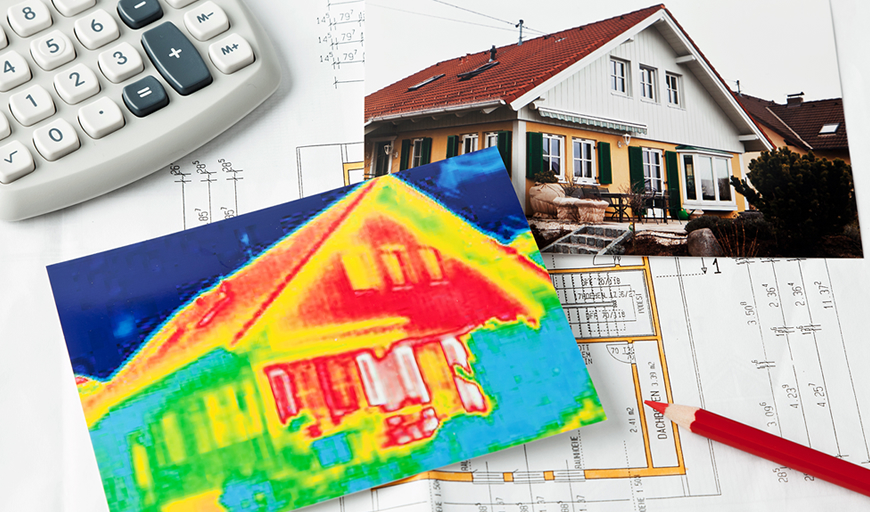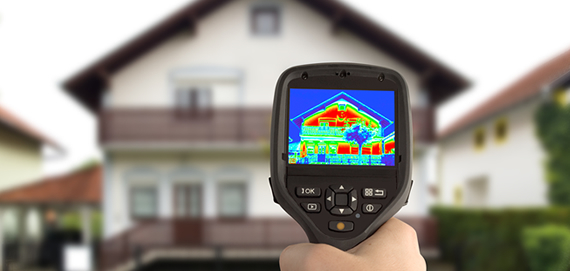Air Leakage and Moisture in the Building Envelope

There is an important need for an air-tight external building envelope construction on Australian homes, and a well built and well considered building envelope will not only save you money, but your health too. This article will explain the problems of air leakage from houses and moisture within the structure due to current temperatures within the homes.
Air Leakage Affects the Building Envelope Performance
An air-tight, well insulated building envelope is an efficient barrier separating the inside of your home with the outdoor elements. A well-insulated home is not efficient unless it is air-tight and may actually cause structural problems and structural deterioration over time if not built properly.
Uncontrolled air leakage into the building fabric will result in reduced energy performance of the building in comparison to that on paper. R-Ratings are often miscalculated due thermal bridging of materials, however, air leaks are usually never considered in Australia.
According to a UK study, air-leakage is one of the most significant contributors to inefficiently heated or cooled buildings.
Even if your home has a good star rating according to NatHERS, the building envelope could be littered with gaps and leakages. The average Australian home leaks fifteen volumes of air every hour. That’s a lot, and will leave your home cold shortly after you switch off the heating. *
If in the summertime, your home is hot when you return from work in the evening, ask yourself this; how is it hot, the windows and doors are closed all day?
The answer is that hot air is seeping in through the gaps in the building envelope.*
(*The above is based on insulation and structural gaps. This article is not considering windows as that is another subject that may be covered in future articles. It is not recommended for buildings with good insulation values to have single glazed windows for numerous reasons, but if you are reading this you may already be aware of the fact.)
 Thermal Imaging camera detecting heat loss from leaking air.
Thermal Imaging camera detecting heat loss from leaking air.
Moisture in Building Fabric
With increased insulation and air-tightness in building envelopes, another, often overlooked, potential issue will occur unless properly controlled and managed.
Your home develops moisture in the air from bodies, cooking, showers etc. With higher insulation properties the inside temperature of a home in winter is up to 3.5° warmer than 10 years ago (UK study). Warmer air has capacity to store more moisture than cool air, therefore moisture management is crucial.
If we take a minimal 1mm gap in insulation, this a space for the internal warm air to pass through the wall, in turn meeting, with the external air temperature somewhere along the wall causing a temperature drop and condensation to occur, otherwise known as ‘dewpoint’. This is interstitial condensation, trapped between the layers of the building envelope, and will cause mould growth, deterioration of the insulation and possible structural degradation.
So it is imperative to build air tight, with continuous insulation, i.e. no gaps. An air tight layer should be on the warm side of the insulation. This will stop vapour from penetrating the structure.
Current and older building methods, including double brick, timber and steel framing are littered with gaps. Reducing and eliminating these gaps will stop vapour penetrating into the structure and condensing, which can cause mould and degradation within the structure.
Problems with Moisture in Buildings
There has been some recent traction on the subject of mould from TV and at Government level due to the diagnosis of CIRS (Chronic Inflammatory Response Syndrome) which can affect 24% of people who breathe mould spores.
“An acute and chronic, systemic inflammatory response syndrome acquired following exposure to the interior environment of a water-damaged building (WDB) with resident toxigenic organisms, including, but not limited to fungi, bacteria, actinomycetes and mycobacteria as well as inflammagens such as endotoxins, beta glucans, hemolysins, proteinases, mannans and possibly spirocyclic drimanes; as well as volatile organic compounds (VOCs).” – Dr Ritchie Shoemaker.
CIRS has gone undiagnosed in many people for years, only 1500 people have been diagnosed in Australia to date, but it is expected that that figure in fact is undiagnosed in possibly 6 figure numbers of people. Symptoms can include fatigue, weakness, aches, muscle cramps, unusual pain, ice pick pain, headache, light sensitivity, red eyes, blurred vision, tearing, sinus problems, cough, shortness of breath, abdominal pain, diarrhoea, joint pain, morning stiffness, memory issues, focus/concentration issues, word recollection issues, decreased learning of new knowledge, confusion, disorientation, skin sensitivity, mood swings, appetite swings, sweats (especially night sweats), temperature regulation or dysregulation problems, excessive thirst, increased urination, static shocks, numbness, tingling, vertigo, metallic taste, tremors, multiple chemical sensitivities.
When mould grows within a building it is due to the constant presence of moisture, this can be caused by leaks, or even vapour that cannot escape due to poor ventilation and that vapour turning into moisture when it comes into contact with a cold surface on or within the structure. Mould is next to impossible to get rid of, even after the moisture source has been eliminated.
Internal Moisture Control
Even in highly insulated air-tight structures, moisture needs to be managed correctly; there are many ventilation products on the market that will mechanically ventilate your home such as Heat Recovery Units or full on heating, cooling and ventilation units.
The most important thing is to ventilate the building, the safest most manageable way to achieve this is to install a heat recovery unit that replaces the stale air in the building with fresh air from outside, whilst using the energy of the exhaust air to heat/cool the incoming fresh air from outside, whilst using the energy of the exhaust ait to heat/cool the incoming fresh air.
The units can vary from $3,000 to beyond $20,000, so it is worth doing homework to see which unit suits your building. And don’t be afraid to open a window.
Contact SIPs Industries on (08) 9494 2211 for more information and a chat about building your SIPs home today.
